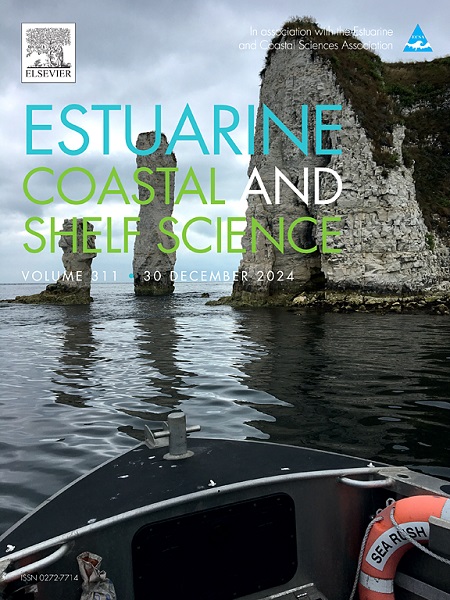德国蓝碳潜力:现状与未来发展
IF 2.6
3区 地球科学
Q1 MARINE & FRESHWATER BIOLOGY
引用次数: 0
摘要
气候变化和生物多样性丧失是全球性挑战,需要通过综合措施加以解决。然而,政治和社会行动尚未跟上这些挑战的紧迫性。海洋固碳生境(“蓝碳生境”)在减缓气候变化方面的作用及其共同效益和生态系统功能,例如作为生境提供者,已得到全球承认。在德国,近年来对沿海和海洋生态系统蓝碳潜力的研究势头强劲。但是,要确保采取政治行动,必须采取具有包容性的决策过程的协同办法。当前的挑战是知识差距巨大,现有数据的可获取性和可转移性有限。在不同行政级别资助研究项目影响协调、产出和可见度。在这里,我们介绍了现有知识的总体概述,并确定了蓝碳研究中的知识空白,并重点关注德国海岸潜在的蓝碳生态系统(bce)。此外,通过研究德国目前的蓝碳框架,我们确定了机会之窗,并在科学-政策-社会界面提供了可行的建议。在此基础上,可以进一步确定正在进行的研究的优先次序并提供资金,以同时加强政治决策进程。这项研究的结果,以及从德国海岸的案例研究中得到的经验教训,建议采取双管齐下的策略,不仅通过生态系统保护和可持续治理和管理来避免已经储存的碳的额外释放,而且通过(重新)建立BCEs来增加净碳储量。本文章由计算机程序翻译,如有差异,请以英文原文为准。
Blue Carbon potential in Germany: Status and future development
Climate change and biodiversity loss are global challenges that need to be addressed through a combination of measures. However, political and societal action has not yet kept pace with the urgency of these challenges. Marine carbon sequestering habitats (“Blue Carbon habitats”) are globally recognized for their role in climate change mitigation and for their co-benefits and ecosystem functions, e.g., as habitat providers. In Germany, research on the Blue Carbon potential of coastal and marine ecosystems has gained momentum in recent years. However, a synergistic approach with an inclusive decision-making process is crucial to ensure political action. Current challenges are considerable knowledge gaps and the limited accessibility and transferability of existing data. Funding of research projects at different administrative levels impacts coordination, output and visibility. Here, we present a general overview of existing knowledge and identified knowledge gaps in Blue Carbon research and focus on potential Blue Carbon ecosystems (BCEs) of the German coast. Furthermore, we identify windows of opportunity and provide actionable recommendations at the science-policy-society interface by examining the current framework for Blue Carbon in Germany. Based on this, ongoing research can be further prioritized and funded in order to simultaneously strengthen the political decision-making process. The results of this study, supported by the lessons learned from a case study on the German coast, recommend a two-pronged strategy to not only avoid additional release of already stored carbon through ecosystem conservation and sustainable governance and management, but also to increase net carbon storage through (re-)establishing BCEs.
求助全文
通过发布文献求助,成功后即可免费获取论文全文。
去求助
来源期刊
CiteScore
5.60
自引率
7.10%
发文量
374
审稿时长
9 months
期刊介绍:
Estuarine, Coastal and Shelf Science is an international multidisciplinary journal devoted to the analysis of saline water phenomena ranging from the outer edge of the continental shelf to the upper limits of the tidal zone. The journal provides a unique forum, unifying the multidisciplinary approaches to the study of the oceanography of estuaries, coastal zones, and continental shelf seas. It features original research papers, review papers and short communications treating such disciplines as zoology, botany, geology, sedimentology, physical oceanography.

 求助内容:
求助内容: 应助结果提醒方式:
应助结果提醒方式:


